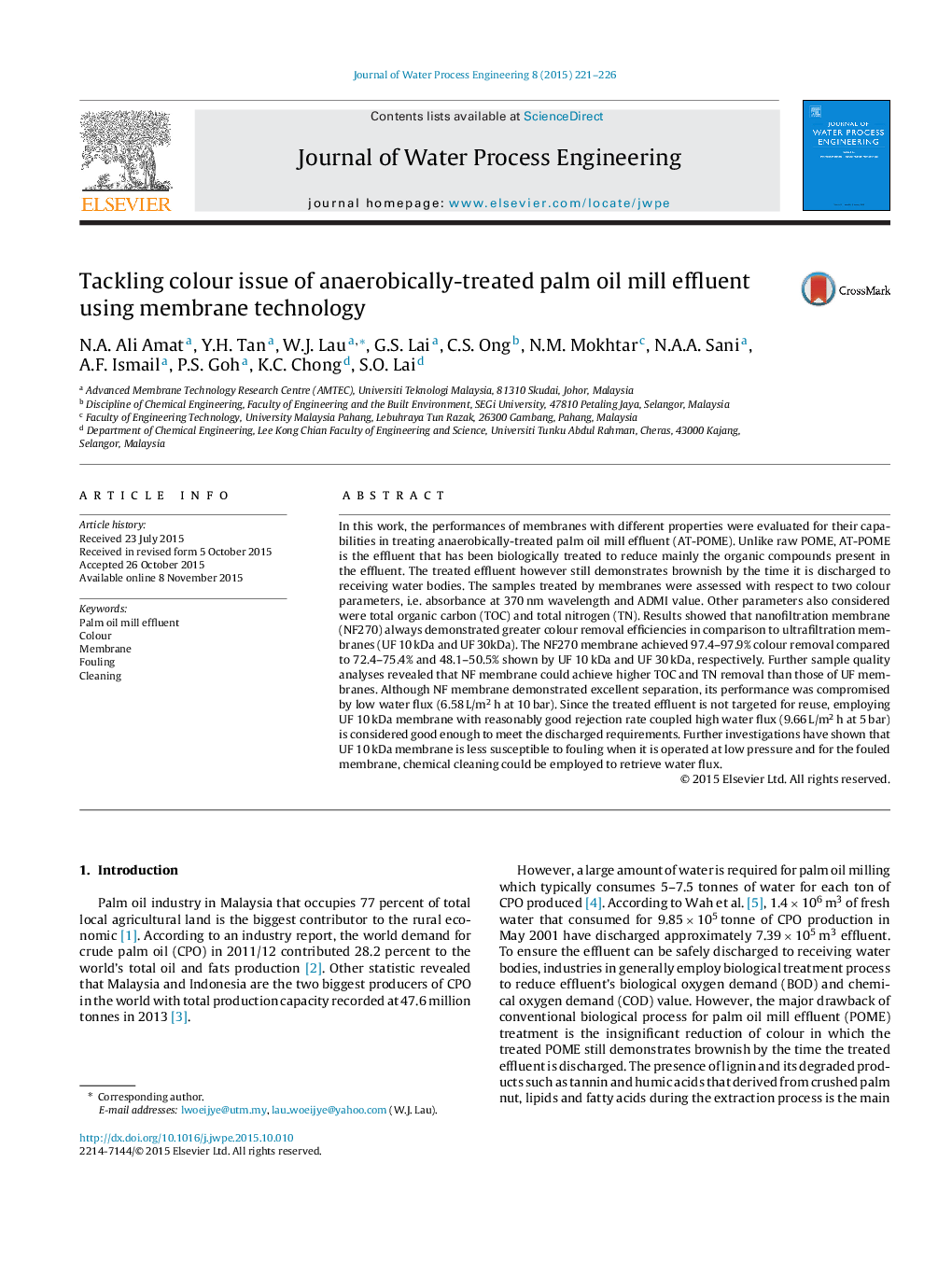| Article ID | Journal | Published Year | Pages | File Type |
|---|---|---|---|---|
| 232520 | Journal of Water Process Engineering | 2015 | 6 Pages |
In this work, the performances of membranes with different properties were evaluated for their capabilities in treating anaerobically-treated palm oil mill effluent (AT-POME). Unlike raw POME, AT-POME is the effluent that has been biologically treated to reduce mainly the organic compounds present in the effluent. The treated effluent however still demonstrates brownish by the time it is discharged to receiving water bodies. The samples treated by membranes were assessed with respect to two colour parameters, i.e. absorbance at 370 nm wavelength and ADMI value. Other parameters also considered were total organic carbon (TOC) and total nitrogen (TN). Results showed that nanofiltration membrane (NF270) always demonstrated greater colour removal efficiencies in comparison to ultrafiltration membranes (UF 10 kDa and UF 30kDa). The NF270 membrane achieved 97.4–97.9% colour removal compared to 72.4–75.4% and 48.1–50.5% shown by UF 10 kDa and UF 30 kDa, respectively. Further sample quality analyses revealed that NF membrane could achieve higher TOC and TN removal than those of UF membranes. Although NF membrane demonstrated excellent separation, its performance was compromised by low water flux (6.58 L/m2 h at 10 bar). Since the treated effluent is not targeted for reuse, employing UF 10 kDa membrane with reasonably good rejection rate coupled high water flux (9.66 L/m2 h at 5 bar) is considered good enough to meet the discharged requirements. Further investigations have shown that UF 10 kDa membrane is less susceptible to fouling when it is operated at low pressure and for the fouled membrane, chemical cleaning could be employed to retrieve water flux.
